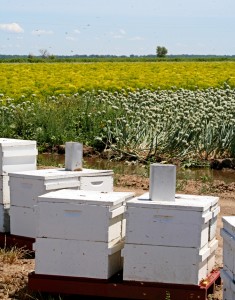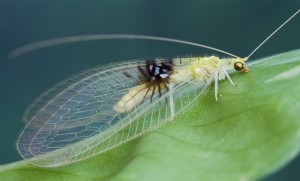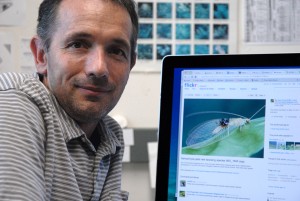CDFA Secretary Karen Ross joined colleagues from states across the country, speaking as NASDA, the National Association of State Departments of Agriculture, in sending a letter to Congress urging swift passage of the 2012 Farm Bill.
http://www.nasda.org/cms/7196/20728/32676/35149.aspx
September 18, 2012
Dear Speaker Boehner and Leader Pelosi:
The members of the National Association of State Departments of Agriculture (NASDA) urge Congress to swiftly pass a full five-year Farm Bill. NASDA members are the chief state agriculture officials from every region of the country and are keenly aware of the significant challenges facing America’s farmers and ranchers. We are particularly concerned about the serious impacts of Congress not passing a Farm Bill prior to the expiration of the current bill later this month. In the absence of Congress passing a full five-year Farm Bill, agricultural producers face tremendous uncertainties about their ability to continue to produce a safe and abundant supply of food, fiber and fuel.
As we gathered this week for NASDA’s annual meeting, the urgent need for Congress to pass a five-year Farm Bill was crystal clear. From the farmers and ranchers who are struggling through disastrous drought, to those facing increasing challenges in the dairy industry, agricultural producers nationwide need certainty about national agricultural policy.
Without a Farm Bill, farmers will face significant challenges securing financing for planting next year’s crop, vital safety-net programs for dairy producers will lapse, livestock producers in drought-stricken regions of the country will be left without important disaster assistance, and important export promotion programs will be frozen. The uncertainty facing our farmers, ranchers, and rural economies compels swift and decisive action by Congress to pass a five-year Farm Bill. We stand ready to work with you to ensure America’s agricultural economy remains strong.
Sincerely,
Steve Troxler
President, National Association of State Departments of Agriculture
Commissioner, North Carolina Department of Agriculture & Consumer Services
John McMillan
Commissioner, Alabama Department of Agriculture and Industries
Fanci Havemeister
Director, Alaska Division of Agriculture
Donald Butler
Director, Arizona Department of Agriculture
Butch Calhoun
Secretary, Arkansas Agriculture Department
Karen Ross
Secretary, California Department of Food & Agriculture
John Salazar
Commissioner, Colorado Department of Agriculture
Steven Reviczky
Commissioner, Connecticut Department of Agriculture
Ed Kee
Secretary, Delaware Department of Agriculture
Adam Putnam
Commissioner, Florida Department of Agriculture & Consumer Services
Russell Kokubun
Chairperson, Hawaii Department of Agriculture
Celia Gould
Director, Idaho State Department of Agriculture
Bob Flider
Acting Director, Illinois Department of Agriculture
Bill Northey
Secretary, Iowa Department of Agriculture & Land Stewardship
Dale Rodman
Secretary, Kansas Department of Agriculture
Michael Strain
Commissioner, Louisiana Department of Agriculture & Forestry
Earl “Buddy” Hance
Secretary, Maryland Department of Agriculture
Jamie Clover Adams
Director, Michigan Department of Agriculture and Rural Development
David Frederickson
Commissioner, Minnesota Department of Agriculture
Cindy Hyde-Smith
Commissioner, Mississippi Department of Agriculture & Commerce
Jon Hagler
Director, Missouri Department of Agriculture
Ron de Yong
Director, Montana Department of Agriculture
Greg Ibach
Director, Nebraska Department of Agriculture
Jim Barbee
Director, Nevada Department of Agriculture
Lorraine Merrill
Commissioner, New Hampshire Department of Agriculture, Markets & Food
Jeff Witte
Director/Secretary, New Mexico Department of Agriculture
Darrel Aubertine
Commissioner, New York State Department of Agriculture & Markets
Doug Goehring
Commissioner, North Dakota Department of Agriculture
Jim Reese
Secretary, Oklahoma Department of Agriculture, Food & Forestry
Katy Coba
Director, Oregon Department of Agriculture
George Greig
Secretary, Pennsylvania Department of Agriculture
Hugh Weathers
Commissioner, South Carolina Department of Agriculture
Walt Bones
Secretary, South Dakota Department of Agriculture
Leonard Blackham
Commissioner, Utah Department of Agriculture and Food
Chuck Ross
Secretary, Vermont Agency of Agriculture, Food & Markets
Dan Newhouse
Director, Washington State Department of Agriculture
Gus Douglass
Commissioner, West Virginia Department of Agriculture
Jason Fearneyhough
Director, Wyoming Department of Agriculture
cc: Chairman Frank Lucas, House Committee on Agriculture
Ranking Member Collin Peterson, House Committee on Agriculture
Chairwoman Debbie Stabenow, Senate Committee on Agriculture, Nutrition and Forestry
Ranking Member Pat Roberts, Senate Committee on Agriculture, Nutrition and Forestry
Members of the U.S. House of Representatives









